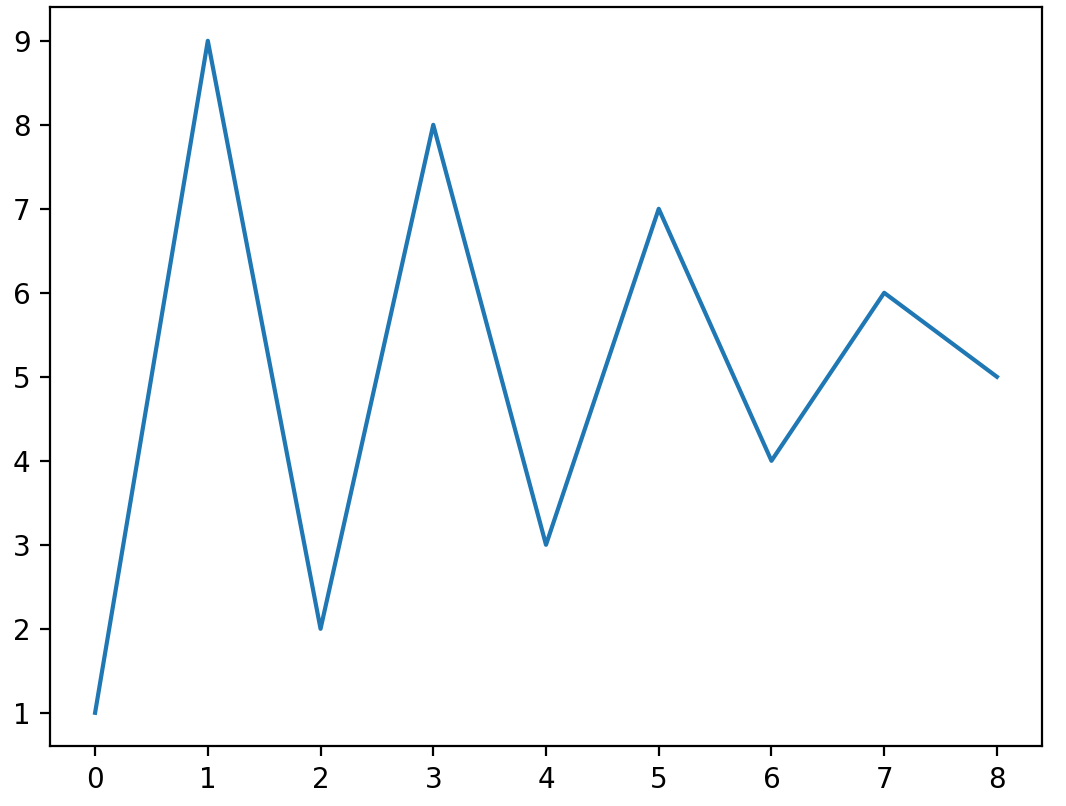はじめに
日本語の説明より、問題⇨答えの形式が記憶掘り起こしに最速だと考え、作成に至りました。
関数もオブジェクト
def fun() : print("a")
fun2 = fun ; fun2()
a
クロージャ(関数閉包)
def fun (a) :
#関数の実態
def fun2 (b) :
return a*b
return fun2
a2 = fun(100) #aへの代入
b2 = a2(200) #bへの代入
print(b2)
20000
無名関数lambda
aiueo = (lambda a,b : a*b)(100,200)
print(aiueo)
20000
print関数
a = 100; b = 200; c = 300
print(a, b, c, sep=",", end="end\n")
100,200,300end
文字列のスライス
a = "0123456789"
print(a[:])
print(a[2::])
print(a[2:7:])
print(a[2:7:2]) #2文字おきにステップ
print(a[::-1]) #最後尾の位置は-1
print(a[-1:-6:-2]) #逆向きに2文字ステップ
0123456789
23456789
23456
246
9876543210
975
変数名の付け方
- ✖︎a,b(汎用的) ◯何を示すかわかる名前
- ✖︎myName(キャメルケース) ◯my_name(スネークケース)
- 1文字目には数字使用不可
文字列のインスタンスメソッド
a = "may the God bee with you._________"
b = a.title() ; print(b) #映画のタイトルみたいに
c = b.replace("God","Force",1) ; print(c) #1個だけ置換
d = c.rstrip("_") ; print(d) #指定された不要文字削除
May The God Bee With You._________
May The Force Bee With You._________
May The Force Bee With You.
文字列のインスタンスメソッド2「埋め込み」
name = "hanako"; age = "45"
a = "{}は{}歳"
print(a.format(name,age)) #変数埋め込み
b = "{1}は{0}歳で超絶可愛い"
print(b.format("20","まいんちゃん"))
print(f"{name}は{age}歳")
hanakoは45歳
まいんちゃんは20歳で超絶可愛い
hanakoは45歳
共有渡し(≒参照渡し)
Pythonのイコールの意味は2つ
- 変数の代入(共有渡し。アドレスを代入)
- 新規作成(オブジェクトを新規作成して、そのアドレスを代入)
リストの中身変更は、アドレスは変わらない。
list1 = [1, 2, 3] #[1,2,3]のアドレスを新しく作って、list1に代入
list2 = list1 #2が持つアドレスを1と共有
list1[0] = 10
print(list2)
print(list1 is list2) #参照先が同じか
print(list1 == list2) #参照先の中身が同じか
[10, 2, 3]
True
True
リストの場合はmutableな為、参照先の中身を書き換えられる。
immutableな文字列や数字の変更は、アドレス変更せざるをえない。
a = 1
b = a
a = 2 #2のアドレスを新しく作って、aに代入
print(b)
print(a is b)
print(a == b)
1
False
False
数値や文字列の場合はimmutableな為、中身だけ変更できない。参照先を変更し、参照先の中身を新規作成。
データ型の種類
- リスト(インデックスで管理,型混在OK)
- 辞書(キーで管理)
- タプル(複数の型をまとめたい)
- セット(集合演算したい)
- 配列(多次元で扱いたい)
リスト
>>> list(range(0,10)) #組み込み関数list
[0, 1, 2, 3, 4, 5, 6, 7, 8, 9]
>>> a = [[0, 1], [2, 3], [4, 5]]
>>> a[2][0] #大きく動いてから、小さく探すと覚える
4
折れ線グラフの書き方
import matplotlib.pyplot as aiueo
x = [1,2,3,4,5,6,7,8,9]
y = [1,9,2,8,3,7,4,6,5]
aiueo.plot(x,y,marker="o") #マーカー付き
aiueo.title("aiueo")
aiueo.xlabel("x")
aiueo.ylabel("y")
aiueo.grid(True) #グリッドを付ける
aiueo.show()
結果
散布図の書き方
import matplotlib.pyplot as aiueo
x = [1,2,3,4,5,6,7,8,9]
y = [1,9,2,8,3,7,4,6,5]
aiueo.scatter(x,y)
aiueo.show()
結果
円グラフの書き方
import matplotlib.pyplot as aiueo
labels = ["A","B","C","D"]
x = [10,20,30,40]
ex = [0,0,0,0.1]
aiueo.pie(x, explode=ex, labels = labels, autopct = '%1.1f%%', startangle = 90)
#autopctってよくわかってない
aiueo.show()
結果
配列を作り方
Numpyライブラリを使う。多次元配列の扱いに優れている。
要素の型を指定できる。
import numpy as np
aiueo = np.array([1, 2, 3, 4, 5, 6], dtype=float)
print(aiueo)
hoge = aiueo.reshape(2, 3)
print(hoge)
結果
[1. 2. 3. 4. 5. 6.]
[[1. 2. 3.]
[4. 5. 6.]]
配列の標準偏差
import numpy as np
sigma = 3.5 #分散
mu = 65 #平均
#点数のサンプルデータ(正規分布の乱数で作成する)
data = sigma * np.random.randn(200) + mu
x = float(input("得点は?:"))
t_score = 10*(x - data.mean())/data.std() + 50 #偏差値
print("平均点:", round(data.mean(),1))
print("標準偏差:", round(data.std(),1))
print("偏差値:", round(t_score, 1))
結果
得点は?:60
平均点: 64.8
標準偏差: 3.4
偏差値: 36.0
教師あり学習
学習データ = 訓練データ + テストデータ
訓練データ ⇄ 教師データ
テストデータ ⇄ 教師データ
機械学習は、まずデータセット
#sklearnパッケージからdatasetsモジュールをimport
from sklearn import datasets
digits = datasets.load_digits()
#手書き文字のデータセットdigitsには5種類のデータがある
print(dir(digits))
print(digits.data.shape) #画像データ
print(digits.images.shape) #画像データ8*8
print(digits.target.shape) #画像データに対応する数字
print(digits.target_names.shape) #書いた数字の種類
print(digits.data) #1797*64の二次元配列
print(digits.images) #1797*8*8の三次元配列
print(digits.target) #要素1797の一次元配列
print(digits.target_names) #要素10の一次元配列
print(digits.data[0]) #なんか一個取り出してみる
print(digits.images[0])
print(digits.target[0])
結果
(1797, 64)
(1797, 8, 8)
(1797,)
(10,)
[ 0. 0. 5. 13. 9. 1. 0. 0. 0. 0. 13. 15. 10. 15. 5. 0. 0. 3.
15. 2. 0. 11. 8. 0. 0. 4. 12. 0. 0. 8. 8. 0. 0. 5. 8. 0.
0. 9. 8. 0. 0. 4. 11. 0. 1. 12. 7. 0. 0. 2. 14. 5. 10. 12.
0. 0. 0. 0. 6. 13. 10. 0. 0. 0.]
[[ 0. 0. 5. 13. 9. 1. 0. 0.]
[ 0. 0. 13. 15. 10. 15. 5. 0.]
[ 0. 3. 15. 2. 0. 11. 8. 0.]
[ 0. 4. 12. 0. 0. 8. 8. 0.]
[ 0. 5. 8. 0. 0. 9. 8. 0.]
[ 0. 4. 11. 0. 1. 12. 7. 0.]
[ 0. 2. 14. 5. 10. 12. 0. 0.]
[ 0. 0. 6. 13. 10. 0. 0. 0.]]
0
学習器にかける
from sklearn import datasets
from sklearn import svm
digits = datasets.load_digits()
n_train = len(digits.data)*2//3
X_train = digits.data[:n_train]
y_train = digits.target[:n_train]
X_test = digits.data[n_train:]
y_test = digits.target[n_train:]
clf = svm.SVC(gamma=0.001)
clf.fit(X_train, y_train)
print(clf.score(X_test, y_test))
結果
0.9632721202003339
